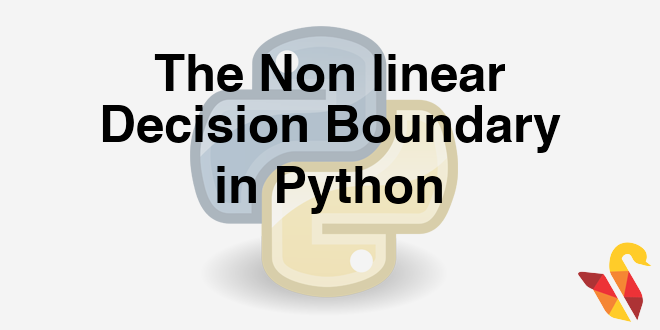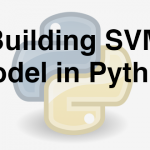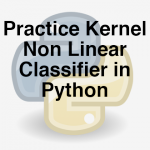
Link to the previous post : https://statinfer.com/204-6-4-building-svm-model-in-python/
The Non-Linear Decision Boundary
- In the above examples we can clearly see the decision boundary is linear.
- SVM works well when the data points are linearly separable.
- If the decision boundary is non-liner then SVM may struggle to classify.
- Observe the below examples, the classes are not linearly separable.
- SVM has no direct theory to set the non-liner decision boundary models.
Mapping to Higher Dimensional Space
- The original maximum-margin hyperplane algorithm proposed by Vapnik in 1963 constructed a linear classifier.
- To fit a non liner boundary classier, we can create new variables(dimensions) in the data and see whether the decision boundary is linear.
- In 1992, Bernhard E. Boser, Isabelle M. Guyon and Vladimir N. Vapnik suggested a way to create nonlinear classifiers by applying the kernel trick.
- In the below example, A single linear classifier is not sufficient.
- Lets create a new variable x2=(x1)2. In the higher dimensional space.
- We can clearly see a possibility of single linear decision boundary.
- This is called kernel trick.
Kernel Trick
- We used a function ϕ(x)=(x,(x2)) to transform the data x into a higher dimensional space.
- In the higher dimensional space, we could easily fit a liner decision boundary.
- This function ϕ(x) is known as kernel function and this process is known as kernel trick in SVM.
- Kernel trick solves the non-linear decision boundary problem much like the hidden layers in neural networks.
- Kernel trick is simply increasing the number of dimensions. It is to make the non-linear decision boundary in lower dimensional space as a linear decision boundary, in higher dimensional space.
- In simple words, Kernel trick makes the non-linear decision boundary to linear (in higher dimensional space).
Kernel Function Examples
| Name | Function | Type problem |
|---|---|---|
| Polynomial Kernel | Best for Image processing | |
| Sigmoid Kernel | Very similar to neural network | |
| Gaussian Kernel | No prior knowledge on data | |
| Linear Kernel | Text Classification | |
| Laplace Radial Basis Function (RBF) | No prior knowledge on data |
- There are many more kernel functions.
Choosing the Kernel Function
- Probably the most tricky part of using SVM.
- The kernel function is important because it creates the kernel matrix, which summarizes all the data.
- There is no proven theory for choosing a kernel function for any given problem. Still there is lot of research going on.
- In practice, a low degree polynomial kernel or RBF kernel with a reasonable width is a good initial try.
- Choosing Kernel function is similar to choosing number of hidden layers in neural networks. Both of them have no proven theory to arrive at a standard value.
- As a first step, we can choose low degree polynomial or radial basis function or one of those from the list.
The next post is a practice session on kernel non-linear classifier.
Link to the next post : https://statinfer.com/204-6-6-practice-kernel-non-linear-classifier/




